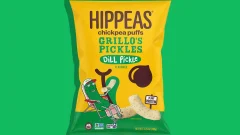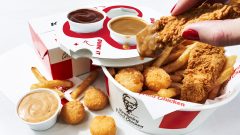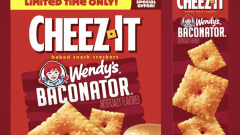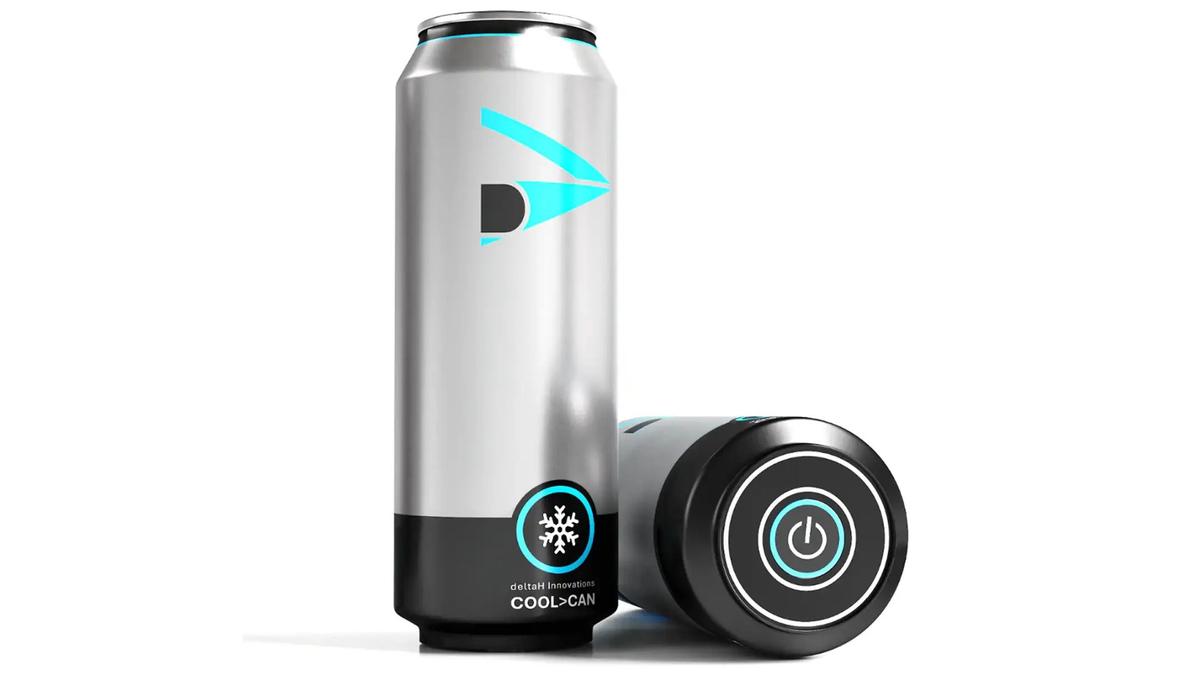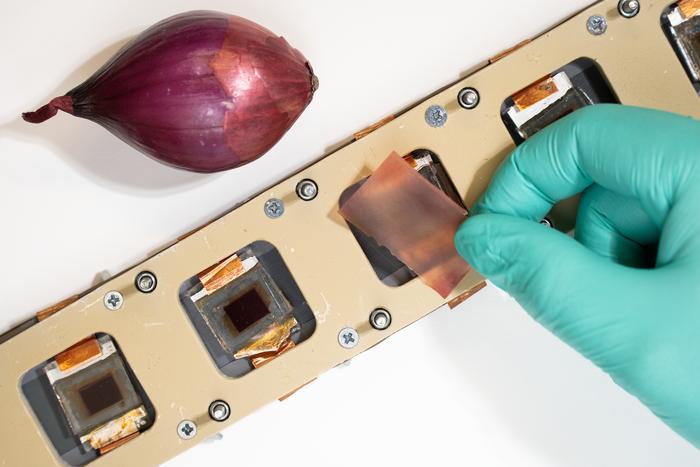Gourmet's: 20 Tools That Changed the Way We Cook
I was off reading some heavy content on chow.com when I came upon an article that international food magazine Gourmet.com did about the “20 Tools and Technologies That Have Changed the Way We Cook”. I found the article so enlightening and informational that I knew I had to post the entire thing here on our website. So bear with me and walk yourself through the changes in cooking since the earliest of times.
“The years since WWII have brought rapid and dramatic changes in the American culinary landscape, both for the better and for the worse. During that time a seemingly endless stream of modern gadgets has paraded through our kitchens, but these are the 20 inventions that we think have had the most lasting impact on home cooking.”
Photograph by Romulo Yanes
Nonstick Cooking:
“Discovered in 1938 and patented in 1945, Teflon was the original nonstick coating. It didn’t make its way onto cookware in this country until the FDA approved the substance for food-processing equipment in 1960—right around the time that the medical community began touting the low-fat diet as healthy for everyone (not just for high-risk heart patients). Thus, nonstick pots and pans began to be seen as essential tools for anyone who wanted to reduce fat intake by cooking with less oil, and recipes began calling for the pans explicitly; today, they comprise roughly 70 percent of all cookware sold. But they’re also a source of controversy: The EPA has determined that PFOA, a chemical used to manufacture nonstick coatings, is a likely human carcinogen. Nonstick pots and pans are considered safe as long as you keep cooking temperatures below 500 degrees (which means no high-heat frying). If you’re not convinced, cast iron—one of the oldest cookware materials—is a great alternative, as long as you maintain your pan’s “patina,” or natural nonstick coating.”
Photograph by Zubin Shroff/Getty
Air Conditioning:
“In many parts of the country today, for at least several months out of the year it’s unthinkable to turn on the oven without first cranking up the air conditioning. While outdoor barbecues and oven-free indoor cooking are still beloved summer pastimes, there are days when you just want to make a cake in August (or Christmas cookies in Florida). After World War II, air-conditioning window units were introduced, and sales soared from 74,000 in 1948 to more than a million in 1953. Now, instead of being beholden to the barbecue pit, cooks in warm climates can comfortably prepare meals indoors year-round. But some scholars of southern culture argue that the South has become less friendly because of air conditioning: The tradition of lingering on the porch with neighbors and sipping mint juleps has fallen by the wayside now that people are able to stay indoors.”
Photograph by Romulo Yanes
Mechanical Timer:
“If you’ve ever played a board game that’s timed by an hourglass, you can probably imagine how difficult it would be to use one of those timers to cook a roast or boil an egg while you’ve got ten other things going on in the kitchen. But until the late 1930s, there wasn’t much alternative (besides unwieldy alarm clocks). Then came the Lux Minute Minder (known as the Minute Meter in the early years), invented in 1936 and mass-produced beginning after World War II. Some version of this simple wind-up timer is a fixture in many American kitchens today, although now there are also fancy digital models with multiple time settings. Regardless of style, timers have helped us become better culinary multitaskers and saved us from a fair number of burnt birthday cakes.”
Photograph by Romulo Yanes
Chimney Starter:
“The smell of charcoal lighter fluid may be synonymous with summer, but the taste is another story—if you aren’t wild about it, a chimney starter (also called a chimney lighter or charcoal chimney) is a must. Basically just a metal cylinder with air holes in the side, the simple but effective tool allows you to light the charcoal on a grill or barbecue without lighter fluid. Although it seems like the kind of device that should have been around forever, the starter wasn’t invented until the 1960s, several years after the Weber boom began. These days, many grilling experts consider the chimney starter an indispensable part of their toolkit.”
Photograph by Romulo Yanes
Plastic Wrap:
“From separating cake layers to forming hamburger patties to (horrors) cooking chicken sous vide, plastic wrap is used for countless projects in the kitchen. Saran wrap was the first brand to hit the market, shortly after it was approved for household use in 1953. Today, plastic wrap is made from several different materials and sold under numerous brand names.”
Photograph by Bettmann/Corbis
Television:
“Julia Child and her incredibly successful, long-running series The French Chef (launched in 1963) revolutionized the way we cooked. Child demonstrated the essentials for cooking simple dishes (like fried eggs) and offered tips on using products such as cast-iron casseroles or blenders; whatever she mentioned, people immediately rushed out to buy the item. There must be hundreds of cooking shows on TV today, often more show-biz than instructive, but there are still tips to learn, techniques to sharpen, and new recipes to add to our already bulging piles.”
Photograph by Romulo Yanes
Vacuum Sealers:
“Vacuum sealers, though newish on the cooking scene, promise to change the way we shop, cook, and store our food. There are many on the market, but we like the Reynolds Handi-Vac Vacuum because it’s compact (about nine inches long), inexpensive ($9.99), and sold in supermarkets. It’s also easy to use. Sealers work by sucking the air out of plastic bags so you can store food in the freezer with no freezer burn. So think of the possibilities: buying at farmers markets when produce is in season, purchasing meat and poultry in quantity from local farmers, cooking for the week. Just seal and freeze, each bag will remain airtight and free of freezer burn for months.”
Photograph by S. Kirchner/photocuisine/Corbis
Dishwasher:
“Thanks to the dishwasher, even busy people can cook like chefs: Use as many bowls as you like for mise en place, serve a crowd of guests, and don’t bat an eyelash over the cleanup. The first model was introduced in the late 1800s, but at the time consumers didn’t have much demand for it—homemakers (that is, women) claimed to enjoy washing dishes by hand. The machines also used a huge amount of hot water, and many homes didn’t have water heaters that could provide a sufficient supply. By the 1950s, when the technology had improved and women’s attitudes toward housework had shifted in favor of convenience, the market for dishwashers began booming. Today, while the appliances are common, ownership correlates strongly with income level: Only 18 percent of the lowest-income households have dishwashers, compared to 83 percent of the highest-income households.”
Photograph by Romulo Yanes
Silpat:
“For anyone who bakes, discovering the Silpat can feel a little like getting blessed by the pastry gods. The silicone mat fits into the bottom of a baking sheet and helps foods brown evenly without sticking; thinner, more delicate types of pastry are easy to slip off the sheet without breaking, so home cooks can successfully tackle advanced recipes like tuiles and petits fours. Both amateur and professional pastry chefs have long used parchment paper to similar effect, but the relatively costly parchment sheets can be used only once or twice, whereas a Silpat can be used up to 2,000 times. Silicone baking surfaces first came into use in the 1960s in France, and the Silpat was introduced in that country in 1982, making its way to the U.S. eight years later. Today, there’s an abundance of silicone bakeware on the American market, but so far it seems that serious home bakers haven’t taken to it the way they have to the Silpat.”
Photograph by George Marx/Getty
Refrigerator:
“Arguably no technology has changed our cooking and eating habits more than this now-ubiquitous home appliance: Without it, we would still be getting regular deliveries from the iceman and the milkman and making daily trips to the butcher’s. Preserving and pickling would be essential ways of life instead of newly rediscovered culinary trends, since perishable foods only lasted about two or three days in an icebox. While the first home refrigerators debuted in the 1910s, mass production didn’t begin in earnest until the Depression; fridge ownership nearly doubled during the WWII years, reaching 85 percent of American households by 1944. Today it’s at 99.9 percent.”
Photograph by Romulo Yanes
Overnight Freight:
“Peaches from California, shrimp from South America, cheese from France…today you can get almost any fresh food shipped overnight, whether it’s from across the country or across the world. But that’s a relatively new phenomenon: The first air-freight services didn’t emerge until after World War II, and they didn’t really pick up until several decades later. Moreover, between the 1950s and 1970s federal restrictions made it difficult for packages to move across state lines, and each state had to authorize the movement of packages within its borders. It wasn’t until 1973, when Federal Express came on the scene, that people gained the ability to ship packages by air for guaranteed next-day delivery. UPS began offering next-day air service about a decade later, and food companies soon jumped at the opportunity to sell fresh goods to far-flung customers.”
Photograph by Romulo Yanes
The Internet:
“In conjunction with overnight freight, the Internet—specifically online shopping—has dramatically changed the way we buy food and influenced what we cook. More importantly, it has made hundreds of thousands (if not millions) of recipes available with a few clicks. Instead of sauce-spattered cookbooks or torn-out magazine pages, many of us are now cooking from printouts or laptop screens. Having a pie-dough emergency? A few keystrokes can bring salvation in the form of a demo video. Just as it has done with everything else in our lives, the Internet is revolutionizing our cooking.”
Photograph by Romulo Yanes
Food Processor:
“Slices, dices, also makes julienne fries: This one tool really does do it all, and it has forever changed prep work in the majority of American kitchens. Shredding cabbage takes mere minutes; pureeing squash no longer means forcing endless batches through the food mill. Recipes for everything from salsas and salad dressing to cookies and cakes call for a food processor. Invented in France in the 1960s, the food processor made its way into American kitchens with the introduction of the Cuisinart in 1973. To gain acceptance of his product, the Cuisinart’s inventor, Carl G. Sontheimer, collected endorsements from James Beard, Julia Child, The New York Times, and Gourmet, and it worked: By 1977, Cuisinart’s sales totaled $50 million.”
Gas Grill
“Most grilling experts look askance at gas grills, which don’t impart the flavor that charcoal- or wood-fired grills do. But for many people that loss is countered by convenience. The original gas grill was created in 1958 by Walter Koziol; six years later he reengineered it into the rectangular shape with the hinged lid we’re now familiar with. Backyard grillers love the fact that they no longer need kindling, charcoal, or starter fuel and that firing a gas grill is as easy as turning a knob and hitting a button. And they like the precise heat that gas delivers, thanks to separate controls for each section of the grill.”
Photograph by Romulo Yanes
Microplane:
“A relatively recent addition to the roster of indispensable kitchen tools, the Microplane was developed in 1990 for use in woodworking. Four years later, a Canadian woman named Lorraine Lee reached for the tool (brought home by her husband, a hardware-store owner) to zest oranges for a cake, and the Microplane’s culinary life began. While box graters tear parmesan to heavy shreds, the Microplane turns it into fluffy, delicate clouds in minutes; shaving chocolate and zesting citrus fruit become similarly quick, pleasurable tasks with the new tool. If you’ve ever felt the wrath of the box grater on your knuckles, odds are you’ve since invested in a Microplane.”
Photograph by Romulo Yanes
Blender:
“Invented in the 1920s, this appliance really took hold after World War II with the introduction of the Waring Blender, and drinking at home has never been the same. The 1950s saw the birth of the tiki cocktail, with blended piña coladas, daiquiris, and other frozen rum drinks becoming hugely popular; today, learning to make a good blended margarita is something of a collegiate rite of passage. Smoothies entered the counterculture scene in the 1960s and hit the mainstream in the 1980s; now there are entire books and websites devoted to smoothie recipes. And not only do blenders fill in for food processors in a pinch, they also do one thing much better: puréeing watery soups and sauces. Without the blender, we’d still be muddling and mashing our way through a good number of recipes.”
Photograph by Romulo Yanes
Slow Cooker:
“Said to be making a comeback now that we’re in an economic downturn, the slow cooker never really left—at least not for long. The first model on the market was the Crock-Pot, introduced in 1971 by the Rival Company; people went crazy for the little electric pot that cooked dinner while they were off at work, and sales reached $93 million by 1975. Other manufacturers soon got into the game, and while sales of slow cookers dipped in the 1980s, they’ve been going strong since the mid-’90s—today, about four-fifths of American households own a slow cooker. We make all kinds of things in them, from soup to nut cake, but the best slow-cooked dishes are indeed the most budget-friendly: low-cost cuts of meat, braised until tender, and simple one-pot bean dishes or stews flavored with a few key herbs and spices.”
Photograph Courtesy of Tupperware
Tupperware:
“The country was ripe for the introduction of amateur inventor Earl Tupper’s plastic containers in 1946. The war had ended, food was once again plentiful, and with the migration to the suburbs American shopping habits had changed. Housewives were no longer walking to their neighborhood grocery stores; they were driving to supermarkets and buying in bulk. Suddenly they had to deal with leftovers and storage, and they discovered that in their (now-ubiquitous) refrigerators food quickly dried out and lost flavor. Tupperware, unlike the traditional crockery or glass containers that were then in use, didn’t crack or break and was lightweight and compact. True, there were other early plastic containers around, but they were unwieldy and some required rubber bands to keep their lids in place. Tupper devised an airtight seal (patterned after the inverted rim on a can of paint) which locked in freshness and flavor. Word quickly spread about this new invention, thanks to the Tupperware parties that became a social phenomenon of the ’50s. Though inexpensive plastic storage containers are now in every supermarket, Tupperware still has its devotees.”
Photograph by Romulo Yanes
Microwave Oven:
“You might say this is the tool that most changed the way we don’t cook, ushering in a whole new genre of frozen and packaged meals with cook times of five minutes or less. The first home microwave was introduced in 1955, but with a price tag of nearly $1,300, the two-foot-wide oven wasn’t a big seller. A 1967 Amana model, which cost less than $500 and fit comfortably on a countertop, fared far better, and the market began to take off. Today, the appliance is by far the most energy-efficient way to reheat leftovers.”
Photograph Courtesy of Weber
Weber Grill:
“Metalworker George Stephen, Sr. is credited with revolutionizing the way we barbecue. Stephen, who worked for the Weber Brothers Metal Works, was an avid backyard griller and was frequently frustrated by the uneven and uncontrollable flame of his open grill. So he cut one of his company’s metal buoys in half and created a dome-shaped grill with a rounded lid. The kettle shape afforded protection from the wind and allowed Stephen to control the flames, while the lid sealed in the smoky flavor. That was in 1952; the nation’s move to the suburbs soon followed, and Stephen’s Weber Kettle became a fixture in every backyard. Grillers liked it because it was compact, transportable, easy to use, and almost foolproof, allowing novices to cook like pros.”
I hope you all enjoyed this article as much as I did, now get out there and cook something! Thanks again to Gourmet for the info.









